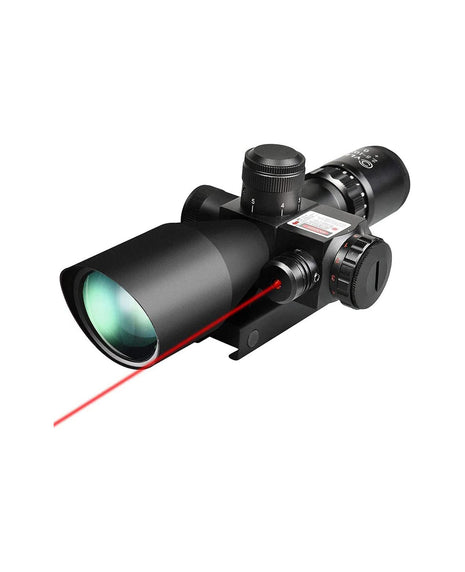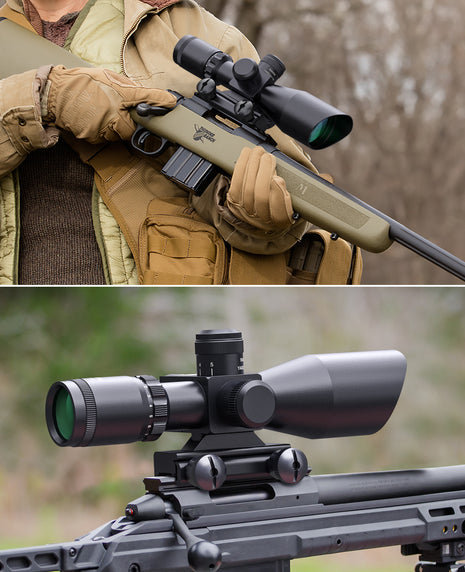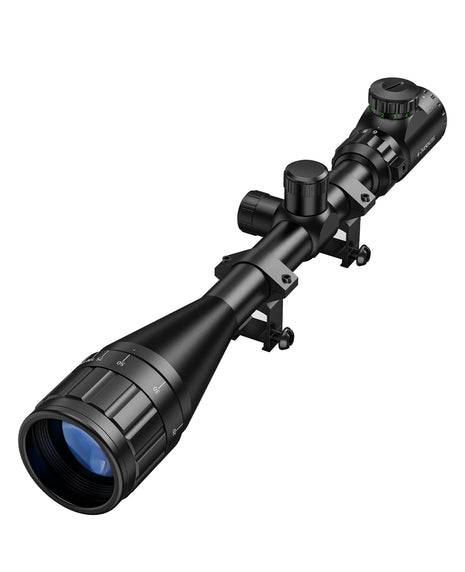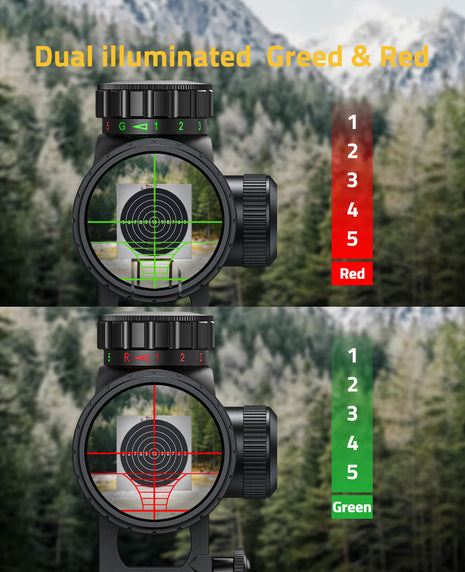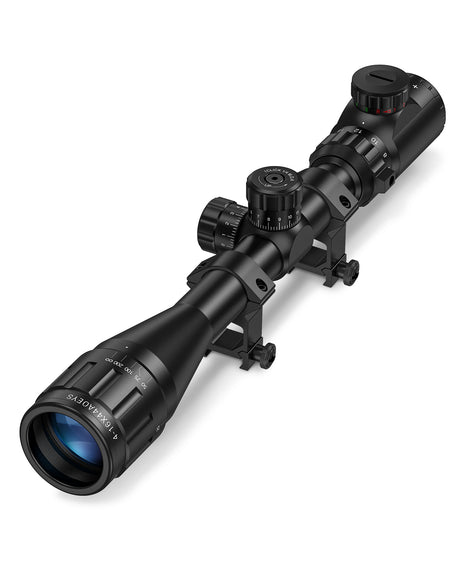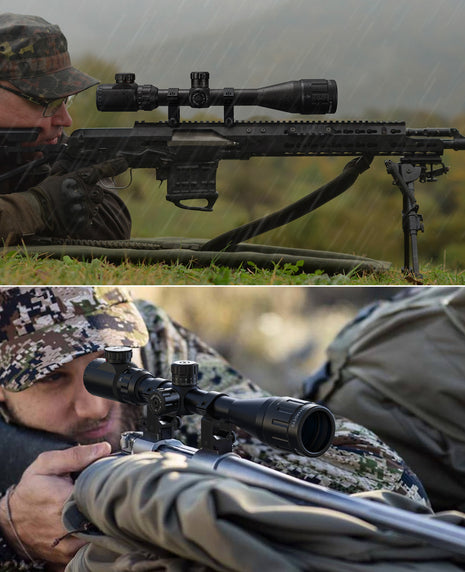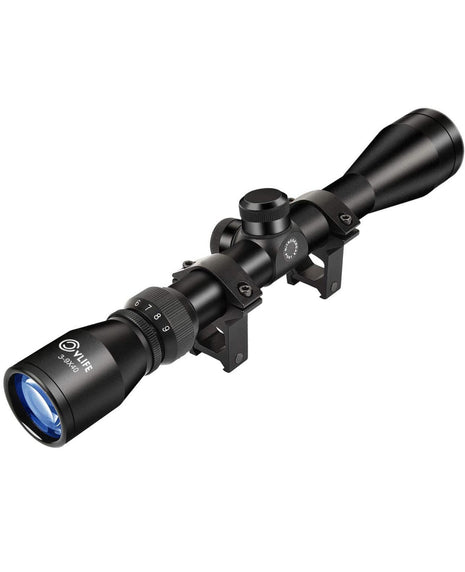What Are Your Tips for Choosing a Rifle Scope?
- 5 Tiempo mínimo de lectura
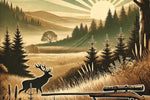
Top Tips for Choosing a Rifle Scope | CVLIFE
Choosing the right rifle scope is a critical decision for both seasoned shooters and beginners alike. Whether you're a hunter, a target shooter, or someone looking to improve your accuracy, a good scope can make all the difference. But with so many options on the market, how do you know which one is right for you? This guide will walk you through the essential factors to consider when picking a rifle scope, so you can make an informed decision and improve your shooting experience.
Table of Contents
1. Consider the Magnification
Magnification is one of the first things to consider when choosing a rifle scope. Magnification dictates how much closer your target appears through the scope, and it typically ranges from low to high power. The right magnification depends on the type of shooting you plan to do. For example, lower magnifications (1-4x) are ideal for close-range shooting, while higher magnifications (up to 20x or more) are better for long-distance shots.
2. Objective Lens Size
The objective lens is the lens located at the end of the scope that faces the target. A larger objective lens allows more light into the scope, which can be beneficial in low-light conditions. However, larger lenses also tend to be bulkier, so it's important to find a balance between clarity and practicality. For general hunting and shooting, an objective lens between 40mm and 50mm should suffice.
3. Reticle Choices
The reticle, or crosshair, helps you aim at your target. There are several types of reticles available, including duplex, mil-dot, and BDC (Bullet Drop Compensation) reticles. Duplex reticles are simple and effective for most general shooting, while mil-dot and BDC reticles are useful for long-range precision shots as they provide reference points for bullet drop and windage adjustments.
4. Turret Adjustments
Scope turrets are used to adjust the elevation and windage of your shots. Some scopes have exposed turrets for quick adjustments, while others feature capped turrets for more rugged use. Look for scopes with precise, tactile turret clicks to make fine adjustments easier and more accurate.
5. Tube Size and Durability
The diameter of the scope tube affects the scope's strength and the amount of adjustment available for windage and elevation. Common tube sizes are 1 inch and 30mm, with larger tubes offering more durability and room for adjustments. A scope built with high-quality materials like aircraft-grade aluminum will also withstand rugged conditions better than cheaper alternatives.
6. Eye Relief
Eye relief refers to the distance between your eye and the scope's eyepiece while still being able to see the full field of view. This is crucial for maintaining comfort and preventing scope bite (when the scope recoils into your eye). Longer eye relief is especially important for high-recoil rifles.
7. Parallax Adjustment
Parallax occurs when the reticle appears to shift when you move your eye behind the scope. For most hunting situations, scopes with fixed parallax are sufficient. However, if you're shooting long-range, a scope with adjustable parallax (side focus) is preferable for greater accuracy.
8. Light Transmission
Light transmission refers to how much light passes through the scope to your eye. A scope with better light transmission provides clearer images, especially in low-light conditions such as dawn or dusk. Look for scopes with multi-coated or fully multi-coated lenses, which reduce glare and improve light gathering.
Looking for high-quality rifle scopes? Check out our latest collection at CVLIFE Rifle Scopes.
Q&A Section
What magnification do I need for hunting?
The magnification you need depends on the type of game and distance. For close-range hunting (50-200 yards), a scope with 1-4x magnification is ideal. For medium-range (200-400 yards), opt for 4-9x. If you're going beyond 400 yards, consider scopes with 10x or more magnification.
How does objective lens size affect performance?
The size of the objective lens determines how much light enters the scope. A larger lens provides better clarity in low-light conditions but also adds weight and bulk. For most hunters, a 40mm to 50mm lens is a good compromise between brightness and portability.
What are the best types of reticles for long-range shooting?
For long-range shooting, BDC (Bullet Drop Compensation) and mil-dot reticles are excellent choices. These reticles provide reference points for bullet drop and windage, making it easier to compensate for environmental factors.
Tags
- Compartir en:
- Deel
- Tweet
- Póngale un alfiler.
- Messenger
- Correo electrónico
You May Also Like
Blogs & News
-

, por C V How to Use BDC Holdovers for Different Bullet Weights?
-

, por C V Is a 1-6x BDC Scope Better Than a 3-9x for AR-15?
-

, por C V How to Zero an AR-15 Scope with a BDC Reticle
-

, por C V What Makes Motion Awake Red Dot Sights Unique

